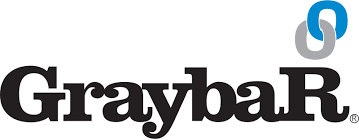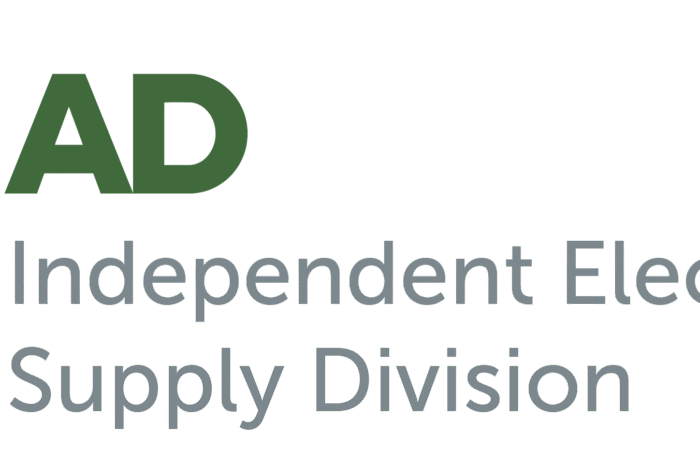National Distributors Report Q2 2018 Results
 Over the past couple of weeks national chains and groups announced their Q2 performance, shedding insight for others regarding the health of the market.
Over the past couple of weeks national chains and groups announced their Q2 performance, shedding insight for others regarding the health of the market.
Below are Q2 2018 overviews from AD, Grainger, Anixter, Graybar, Rexel and WESCO.
And, it appears, the industrial and contractor segments are doing well and are on-track for achieving industry projections with a little help from commodity pricing.
While some headline numbers appear to show some companies are outperforming the market, the key is digging into the numbers to gain a perspective geographically as well as by major market segment as consolidated information can be misleading to the general public (manufacturers may gain more insight in one-on-one conversations.)
Grainger
Grainger was the first national distributor to report. Historically the company is a bellweather for the industrial MRO segment of the business. Their Q2 quarterly results showed the US business up 11% and their mid-sized customer segment growing 29%. You can read our analysis here, however, a couple of key points:
- Only 15-20% of Grainger’s business is electrical
- It’s electrical business contains little, if any, commodity products (wire, cable, pipe) and hence they are less impacted by steel, aluminum and copper pricing.
- A smaller percentage of their business, compared to electrical distributors, is lighting so they are less impacted by price erosion in this segment nor do they benefit from the frequency of medium and large lighting projects.
AD
AD shared its results earlier this week and the headline number of 13% may be misleading as it is an aggregate number.
According to their press release, AD’s electrical group was up 9%. However, no guidance was shared regarding regional performance to determine AD’s US electrical group to enable comparisons. While the US division is the largest element of the electrical group,
- Mexico and Canada can impact, positively or negatively, overall performance
- Mexico, which is all electrical, was up 12%
- Canada has members in the electrical, bearings and power transmission, HVAC, PVF, and industrial divisions and, as a country, was up 10%
- Given the membership make-up of a number of larger distributors, the pricing impact of commodities can also drive revenue. According to a national chain, they are estimating that commodity (steel and aluminum) may be generating a 2-4% sales impact.
Rexel
Insights from Rexel (slides) with a focus on US:
- Worldwide sales up 4.5% for 2018 YTD with a gross margin of 24.8%
- European digital sales at 22.5% of total EU sales during 2018 YTD, up from 20.1% in 2017
- Web is 15.6% and EDI is 6.9%
- Seeking to “accelerate digital transformation” in its offer and customer relationship
- North America up 6.5%
- US makes up 77% of North America sales
- US up 7.3% / Canada up 4%
- Driven by commercial and industrial markets (up mid-high single digits)
- “Market share” gains in Gulf Central, Northwest and Florida, “slower growth” in Northeast
- Note: They state a % increase in market share but don’t provide their share or the source, so information could be “self-serving” as feedback from distributors and manufacturers in those marketplaces has not anecdotally validated that Rexel is “outperforming”.
- North America gross margins are 23.1%
- Up 66 basis points vs 2017
- North America Adjusted EBITA of 4.5%, up 70 basis points (so they are operating more profitably.)
- US fill rate increased from 89% in April 2017 to 96.9% in Q2 2018
- Branch openings added 1.9% to sales growth
- Have opened 29 new branches / counters since 2017. Expect 60 by end of year
- 8000+ new customers (new customer defined as someone who did $0 previously, so can be somewhat misleading as repeat business and account penetration is more important. At Channel Marketing Group we classify “new” as accounts that did <$5000 the prior year and exceed $25,000 with a minimum of 10 orders in the current year as the issue is about market share, not churning accounts.)
- Rexel North America focused on:
- Supplier concentration
- Pricing initiatives
- 2018 Outlook … worldwide
- Sales up low single digits
- European digital sales at 22.5% of total EU sales during 2018 YTD, up from 20.1% in 2017
Overall a good quarter for Rexel US being up 7.3% for the C&I business. On par with industry peers, for the most part. Good margins in the US lead to profitability.
In a press release, Graybar highlighted its Q2 performance: (additional information comes from its 10-Q filing)
- 7% sales increase for quarter as well as YTD
- Gross margin of 19.2%, up about .4%
- GM$ were up 8.8% (so profit grew at a faster rate than sales. This is either due to business mix, product mix, price management or passing on supplier increases with a slight “improvement”.)
- Sales by segment for the quarter
- Construction up 8.2%
- Industrial & Utility up 6.4%
- Institution (CIG) up 3.8%
- Focused on “investments in people, technology, service innovation” (sounds like the industry mantra! Every distributor is espousing the same thing, which begs the question, where’s the differentiation?”)
- Service revenue is <1% of gross sales for quarter and 2018 YTD highlighting the challenge of charging customers for services “as a line-item”
- Opened a 240,000 sq’ distribution center in Denver which will house $15M in inventory from 12,500 SKUs and have space for product staging, kitting, jobsite boxes / carts and wire and cable management (which shows the investment to support some of the more recognized contractor value-added services and then begs the questions of 1) what does Graybar charge for those services? 2) how much revenue are the generating and/or 3) what business does this enable Graybar to earn and is it at a higher margin than comparable business? The press release / article in TED did not mention if the facility will handle eCommerce orders in the Rocky Mountain area.)
Graybar is performing well in the construction space.
WESCO
Highlights from WESCO’s earnings call (and here’s a link to their slides) and analyst questions highlighted the difference between a headline number and insights about the business.
- The company reported organic sales growth of 9%. Goal was 7-10%
- Interestingly the rate of growth declined during the quarter from 11% in April to 7% in June (but the 7% in June was 11 up vs 2017 highlighting that June 2017 was weaker, which is to be expected due to at least commodity pricing.)
- For July, “the third quarter is off to a strong start with mid-single digit range.” (So, decent but nothing to write home about … perhaps industry average.)
- EBIT margin of 4.3%
- WESCO Overall
- 37% of business is Industrial
- 33% is construction
- 16% is utility
- 14% is Institutional markets
- 15% Wire / conduit / cable
- 12% Lighting and “sustainability” (solar, wind)
- 10% Electrical distribution and controls (switchgear)
- 8% Automation, Controls, Motors
- 15% Communications & Security
- The other 40% of products are “general supplies”
- The US, and Canada, were up 8%, while International was up 30% (a small portion of their business)
- Gross margin across the platform was 19%, down 20 basis points (i.e. was 19.2%)
- International and utility have lower margins, hence pulling down average. Overall, margin would have increased 10 bps (.1%) vs prior year and, in WESCO’s words, “stabilized.”
- Backlog increased
- Business Mix
- Industrial up 5% in US (down from 10.4% in Q1) and 7% in Canada but 16% internationally.
- Strength in technology, petrochem (which we’ve heard from most, if not all, distributors in the Gulf Coast), metals / mining, aerospace and food & beverage (markets for others to consider also).
- Construction up 8% in US, 9% in Canada (US was down from 9.4% in Q1)
- Backlog up 10%
- Utility up 22% in US, down 2% in Canada for a net 19% increase (and since this business is a significant revenue driver for WESCO, it helps amplify the top line number of 9%. For most distributors and manufacturers, the Industrial (5%) and Construction (8%) are the benchmarks to consider.)
- Institutional Business (CIG) was up organically 9% (up 1% from Q1), Canada was up 14%, “strong” International but no mention of US (which may infer something about results being disappointing.)
- Industrial up 5% in US (down from 10.4% in Q1) and 7% in Canada but 16% internationally.
- Q3 Outlook
- Sales growth of 3-6% for Q3 but 6-9% for the year (so, decelerating. Perhaps seeing some end-user trepidation / hesitation due to potential tariff / trade concerns?)
- Analyst Questions
- WESCO saw more supplier increases in Q2, comparable to the amount typically see in Q1. WESCO tries to “add a little as evidenced to margin improvement” to price increases when feels it can.
- From call appears that there is a 2% increase in sales during the quarter due to price. (This will change by distributor based upon business mix, especially relating to steel and aluminum, perhaps mitigated a little due to copper.)
- WESCO claims “significantly outperform the market” 1-2%, nonetheless it then begs the question of “what segment of the market / which market?”. Perhaps when it shares outlooks WESCO can provide an objective reference for defining “market” and its source? Industrial and construction, from speaking with distributors, is comparable performance vs others, in aggregate.
- Reportedly “growing” in all product categories. Lighting retrofits were specifically mentioned. Feel will “take share” in second half of year due to “execution.”
- Wire, Cable, Conduit is 15% of sales
- Doesn’t want ‘spot market business’
- Projecting full-year 2018 growth of 6-9%
- Industrial mid-single digits, up from low single to middle single digits
- Construction to mid-single digits up from flat to mid-single digits
- Utility to low single to mid-single digits, up from flat to low
- CIG flat
- Feel will outperform the market by 2-3 points (tough to see unless all coming from industrial as our read is market will be in the 6-9%)
- At the end of the call WESCO
- Specifically mentioned growth in lighting … up high single digits … with a focus on retrofit / renovations
- Double digit growth in communications and security due to broadband and datacom opportunities.
In addition to the sales performance, “execution” on services and performance was mentioned. Part of this included the company conducting it’s Hawaii incentive trip in April (video here) where they had 940 customer, supplier and WESCO attendees. Earlier this year they also launched a 2018 group travel and merchandise program for contractor customers.
A new Chief Human Resources Officer was announced on the call which will hopefully facilitate some of the “palace intrigue” we’ve heard that has resulted in some senior management movement (to other divisions as well as out of the company) and perhaps a little sales / regional friction.
Overall a good quarter. Market performing performance (although WESCO tried getting analysts to focus on “double stacking” performance … review vs 2 years and justifying performance versus improved comparables in 2017). Interesting to see the deceleration of growth during the quarter and into July.
Anixter
Frequently industry observers overlook Anixter as we don’t think of them as being “in the electrical space”, however, recall that they did purchase HD Supply’s electrical division. Additionally, a number of manufacturers do sell to Anixter as Anixter has sought to diversify its business. Anixter also acquired HD Supply’s utility business in the acquisition and is the parent company of WireXpress.
Some highlights from their call with a focus on the ESS group (where the electrical group is housed):
- Organic Sales up 4.9% vs up 1.6% last quarter. This was better than Anixter expected.
- North America up 4.6% vs up 2% last quarter
- Copper Inflation and foreign exchange rates were beneficial to sales which were up 6.8% total vs 3.6% last quarter (so, about 2% impact of commodity inflation plus foreign exchange)
- Seeing improving backlog … building
- Network & Security Solution Sales
- Organic growth up 4.7% vs down 0.5% last quarter
- Growth in mid-sized project business, wireless and professional audio/video initiatives, large service provider programs and recovery in large project business, driven by financial services customers
- North America was up 4% vs down 0.4% last quarter
- Electric & Electronic Solution Sales (they segment of interest)
- Organic sales up 4.7% vs up 3.7% last quarter
- North America up 4.5% vs up 3.6% last quarter
- North America sales are $474M
- Strong growth in OEM business. Strength in industrial side of the business, driven by global complex customers, including EPCs, oil & gas and alternative energy end users
- “Our strategic alignment with electrical suppliers is helping us to grow sales beyond our core wire and cable products in both new and legacy customers, translating into significant opportunity for business.” (Which, congratulations to Anixter, however, it begs the question of why are electrical distributors losing this business to Anixter and why do manufacturers see the need to expand their distribution footprint and support / enable Anixter? Could their existing distributors earn that business or will manufacturers open anyone who has a PO?)
- EES adjusted EBITDA was 6.7%; overall company was 5%
- Organic sales up 4.7% vs up 3.7% last quarter
- Utility Power Solutions
- Organic sales up 5.8% vs 4.0% growth last quarter
- Profitability
- Gross Profit
- Gross Margin decreased 20bps from 19.8% to 19.6% and was flat sequentially
- Decrease was due to customer and product mix and cost inflation, primarily in the Utility Power Segment
- Company also commented on initiative to drive earnings improvement (profitability) and has a restructuring initiative to result in a “more competitive cost structure” … sounds like cost cutting / labor savings. Issues relate to higher employee benefit / medical costs and freight costs.
- Operating Profit
- Adjusted operating profit was down 10bps y/y from 15.2% to 15.1%
- Inflationary pressures, including higher freight and employee benefits impacted performance
- Increased freight expenses were 20 basis points on operating expense as a percent of sales.
- From recent acquisitions, expect some “rationalization” of facilities / back-office functions. Will impact 3% of global workforce.
- Adjusted operating profit was down 10bps y/y from 15.2% to 15.1%
- 2018 Outlook
- Raised organic growth outlook for 2018 to 3.5-5% vs 2%-5% prior. (so they lag the overall industry and, given price increases, are underperforming the electrical distribution market.)
- Estimate Q3 at 4-5% (a slight decline vs Q2 when currency and commodity inflation are included.)
- Projecting full year average copper price of $2.90, up from $2.80 in 2017
- Longer-term seeking to:
- Do more cross-selling amongst divisions and geographies with introducing new services / solutions to customers
- Increasing OEM focus for the electrical business.
- Expand the HD Supply electrical capabilities into the industrial space
- Expand wireless and AV business … and they see some synergies between this and electrical at the customer level given product changes.
- Gross Margin decreased 20bps from 19.8% to 19.6% and was flat sequentially
- Gross Profit
Anixter, at least for electrical, seems to “muddle” along. If the ESS group is considered “electrical”, it is underperforming the market and, if not enabled by suppliers, could be in much worse shape.
So, overall a good North America / US Q2 for large companies and entities. Commercial construction stronger than industrial but this is to be expected given commodity pricing (more used in the construction market) as well as projects. Gulf Coast / petrochem market is strong.
Of some concern is companies reporting declining rates of growth month over month. Some focus on justifying it vs prior year, however, the growth rate is still declining while operating expenses will continue to increase (employee expenses, technology investments, freight, etc…)
A couple of trends …
- Focus on services (either promoting them or charging for them)
- One-stop shop / cross-selling of services
- Omni-channel … do business the way your customers want to do business.
- Product offering … evolve to merging of product markets
- Vertical focus in some areas (and hence vertical marketing)
However, the question, and challenge is, if the big companies are comparable in performance and in many cases going after the same customers (except for Rexel), what should be done differently?
And a little detail helps put performance into perspective and adds transparency.























